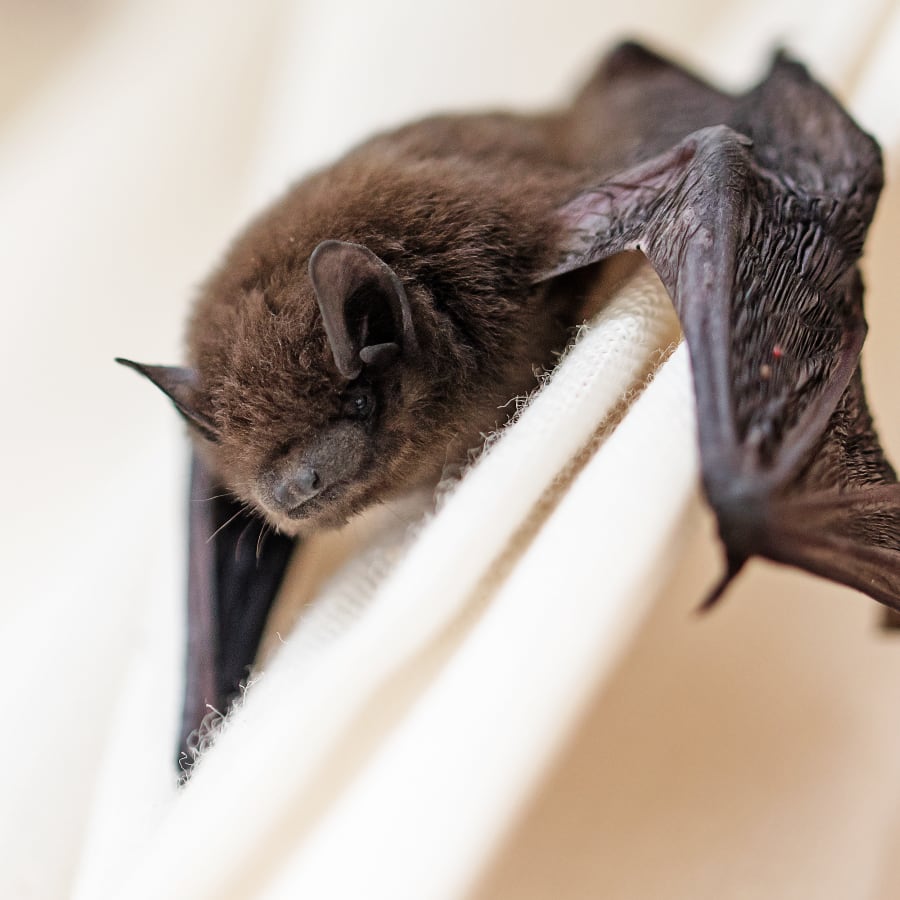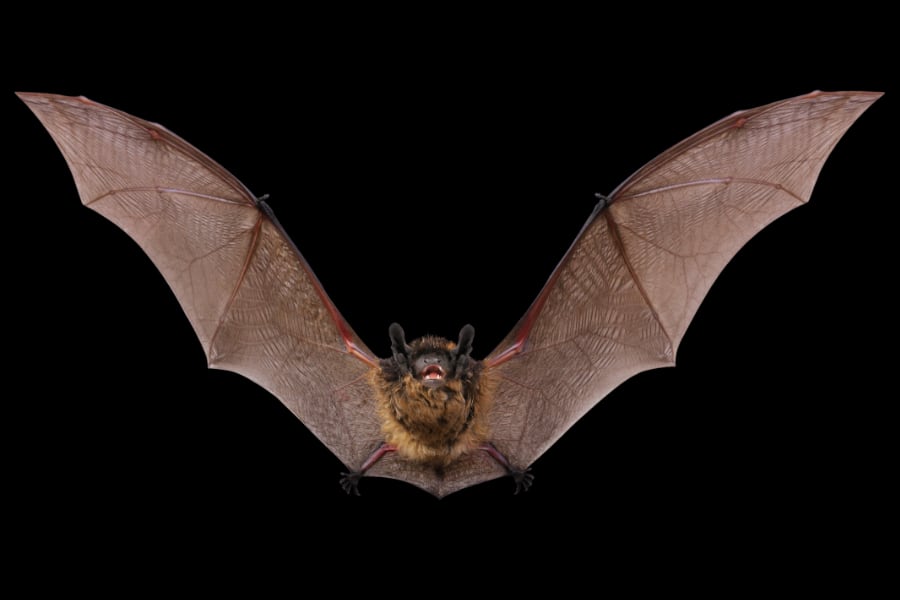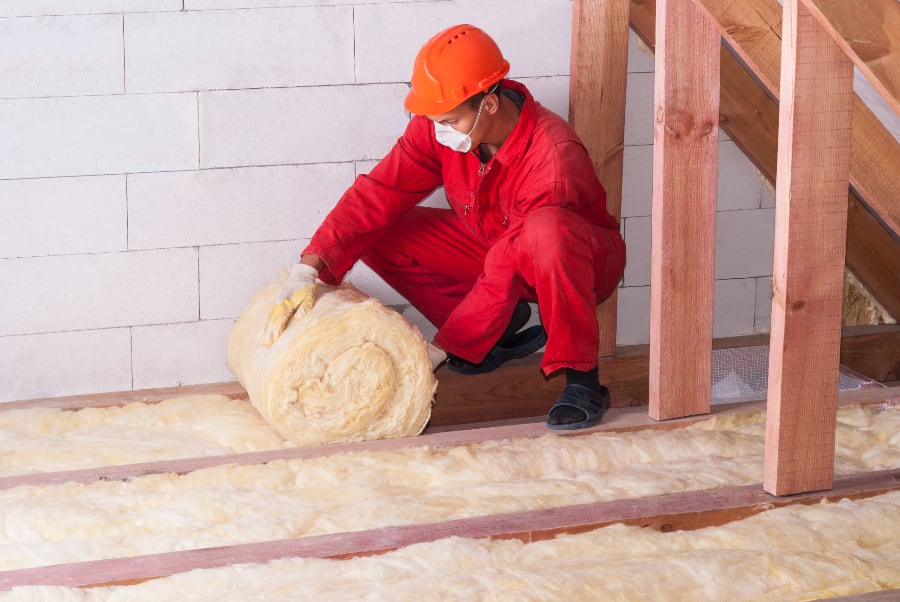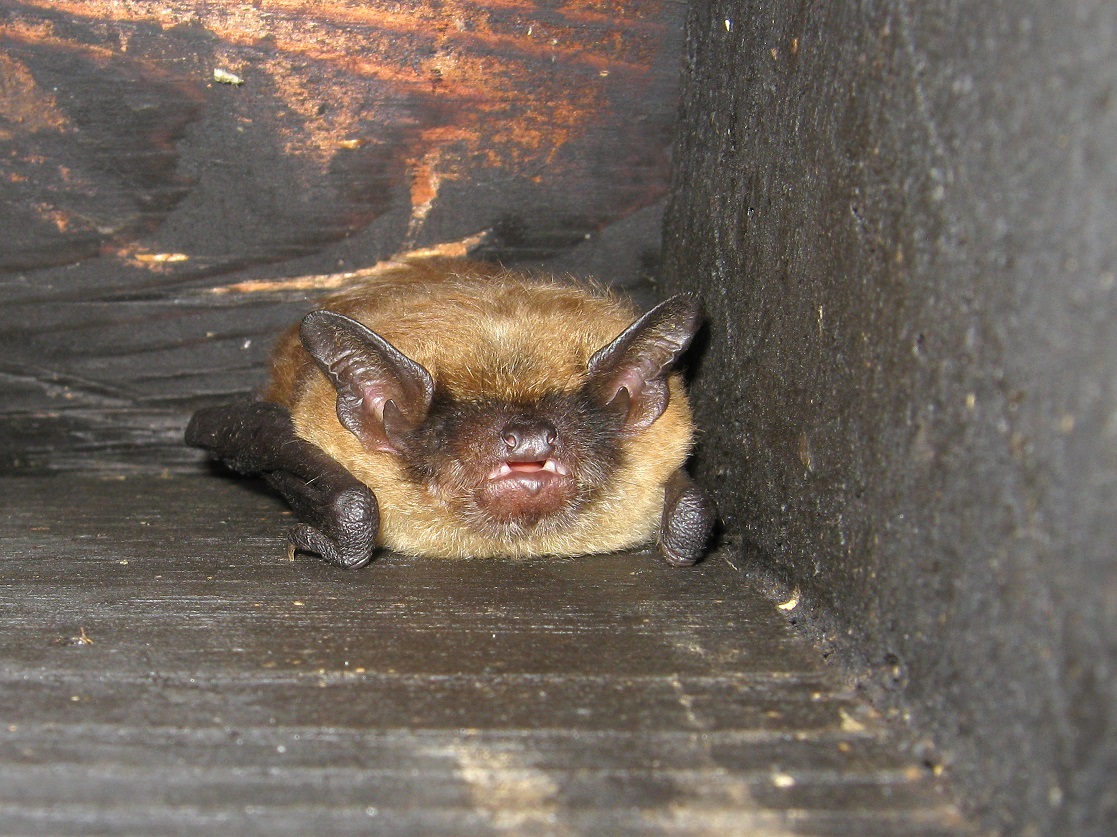Helping Homeowners Humanely Remove Bats and Capture Bats for Rabies Testing Since 1976
When there’s a bat in your house, anything can happen. There may be a bat colony in your walls or attic. Bat droppings can sicken your family. Contamination can cause disease. ABC Wildlife removes bats, submits them for rabies testing when needed, and seals them out so they don’t come back.
Since 1976, we’ve been resolving human-wildlife conflict across Chicago and the surrounding suburban counties by humanely removing bats and remediating the contamination they leave behind.
- Humane bat colony removal from anywhere in your home
- On-call emergency bat capture and removal
- Bat contamination remediation
- Barriers installed and gaps sealed to prevent bats from coming back
- Peace of mind delivered
Bats have their place in nature, not in your house.
Ready to Reach out?
Our experts are here to listen, understand your problem, and get you the help you need. Let’s talk.

Ken P.
Antioch, IL
★★★★★
Prompt, Professional, and Easy to Work with
“ABC Humane Wildlife has been nothing less than prompt, professional and easy to work with. Every employee (office support and technicians) has been friendly and willing to answer all of our questions and concerns. When prepping for the set up and the removal of the animals, precautions were taken to avoid trapping our outside cat!”
What Happens When There’s a Bat in My House?
If you wake up with a bat in your bedroom, the bat needs to be tested for rabies. Our expert biologists will capture the bat and submit it for rabies testing. After that’s taken care of, we’ll inspect the outside of your home to determine how bats got in. Then we’ll seal them out.
Bat guano in the attic can be dangerous. Fungal spores that cause lung disease grow on the guano. ABC Wildlife removes the bats and the contamination bats leave behind. Contaminated insulation is carefully removed and replaced with fresh clean insulation to protect your family’s health and the air quality in your home.
What is the process for Getting Rid of Bats?
- First we inspect the outside of your home to determine where bats are getting in.
- Then we remove the bat colony by installing one-way doors that allow the bats to fly out, but not re-enter.
- Finally we remove the contamination the bats left behind and seal bats out for good.
We solve every wildlife issue from A through Z. When bats invade your home, yard, attic, or business, we make bat proofing your building as simple as A-B-C.
Knowledgeable Staff
ABC Wildlife is a certified bat exclusion contractor. We have over 40 years of experience in humane bat removal and humane bat colony remediation. Additionally, every ABC Wildlife state-certified bat expert receives extensive training before receiving their certification in humane wildlife control.
Scientific Techniques
Bats are a beneficial part of the ecosystem, but when they live too close to humans they can spread disease. Because bats are a protected species, bats cannot be trapped or killed. Instead, our bat experts use one-way doors that allow the bats to leave for good without harming them. Because we use the latest science, we get the job done effectively to keep your family safe.
Comprehensive Service
Once we seal the bats out of your home, the contamination they leave behind must be removed to ensure that the diseases in their droppings don’t make your family sick. ABC Wildlife keeps you safe by removing contaminated insulation and replacing it with new clean insulation.
Comprehensive Bat Removal and Prevention in Chicagoland
Get them out. Keep them out. Get your life back.
Damage Repair
Eliminate health hazards caused by bat guano and get life back to normal.
Seal Bats Out
Bats want to come back. We’ll make sure they can’t. We seal up every hole or gap through which bats can enter.
Why Do I Have Bats?
Bats enter homes through holes as small as a dime. They roost in attics, under flashing, and within inaccessible wall voids. Sometimes bats enter the bedroom or human-occupied areas of the home, and this is dangerous because bats carry rabies.
Bats are common in Chicago and the surrounding suburbs. While every town in Illinois has bats, they are more common in forested areas and around bodies of water. The towns where bats most often enter houses are Naperville, Evanston, Barrington, Glendale Heights, Carol Stream, Kenilworth, Glencoe, Winnetka, River Forest, Hinsdale, Western Springs, and Oak Brook.
They’re looking for shelter. They’re looking for warmth. They’re looking at your home, no matter where you live.
Illinois Bat Control, Removal & Exclusion
Are there bats in your home or commercial building? Scurrying or scratching noises in your garage, attic, or ceiling might mean you have unwanted visitors. If so, we can help. ABC Humane Wildlife Control & Prevention has the experience, resources, and methods to remove bats from your home effectively. Give us a call today at 1-847-870-7175. Our Illinois bat control experts are available 24/7 to answer your questions, to help you identify and control you bat problem and to return your life back to normal.
Identification of Bats
Bats are easy to identify, because they are the only winged mammal. Many possess a wingspan of fewer than 12 inches and typically weigh only a few ounces. Bats are nocturnal and are most active at twilight. They use a highly evolved navigational system called echolocation that allows them to “see” in the dark. Twilight is a perfect feeding time since a bat’s diet consists mainly of insects, and flying insects are highly active during that time. As a species, bats share a large part of the worldwide pest control burden with a single bat eating between 100 and 1000 flying insects in a single night. This is why ABC chooses to humanely exclude bats in all circumstances. Trust the NWCOA certified bat exclusion experts at ABC Humane Wildlife to identify and exclude any bats from your home in a humane manner.
Habitat of Bats in Illinois
While there are over 1200 species of bats worldwide, only about 45 are present in the United States. Illinois is home to 12 different species of bat. The types most common in Illinois, and the types that give home and business owners the most difficulty, are the little brown bat and the big brown bat. For 40 years, ABC Wildlife has helped homeowners across Chicago and all of Northern Illinois deal with bat problems.
Bats Cause Damage Across Illinois
Bats usually gain access to homes in the spring and summer, most commonly inside attics, to nest and raise their young. Throughout Illinois, bats enter buildings and homes through damaged roof shingles, fascia boards, soffits, and vents. If a bat is inside your home or commercial building, it has likely established multiple points of entry. Once a colony of bats is established in an attic, they often damage the insulation with their feces or guano. This guano can contaminate insulation and create an overwhelming ammonia smell. If this occurs, trust the trained insulation removal experts at ABC Wildlife to remove the contaminated insulation safely and effectively.
Health Concerns Related to Bats
As insectivores and seed and pollen dispensers, bats play an essential role in the balance of our environment. Nevertheless, bats can present a serious threat to humans. Bats are one of the top carriers of rabies, a viral disease that causes encephalitis (brain inflammation) and death. Also hazardous to humans is the possible development of histoplasmosis, a disease caused by the fungus Histoplasma capsulatum that grows in bat and bird droppings. Histoplasmosis affects thousands of people each year and can be extremely dangerous to children, the elderly, and those with weak immune systems. Bats are also carriers of fleas, lice, mites, and bat bugs, which can infect both animals and humans. If you think you have bats in your attic, do not enter the attic, and do not seal up the area they are using to enter your home. Sealing up the bat’s entry points can result in additional damage to your home and cause stress for your family. Often times, well-meaning contractors will seal gaps without humanely excluding bats first, making it more likely for the bats to enter the living space.
A Local Family’s Experience with Bats in Their Home
In the hopes of helping others in honor of World Rabies Day, a young father in the suburbs of Chicago shares his story about bat removal.
“My name is Keenan Miller, I am a homeowner in Batavia Illinois. About two months ago, we came home to find a bat in our house. My older son who’s four came downstairs this way. As soon as he walked past me here, I just heard this screeching noise: I didn’t know what it was. I just happened to turn, roll over and there is a bat right here on the carpet now crawling this way back towards the chimney. I heard this ‘thud’ in the fireplace. Then out of the corner of my eye I see something moving up the screen, and it got the top of the screen and before I could run around, grab the broom and try to hit it back in, it started flying around; they just move so fast; and my wife and I were like, ‘get this bat down!’ eventually it rested right next to the TV on the bricks. The next day ABC Wildlife came, checked inside and took the bats away.
[A bat that has been in a room with a sleeping person, an unattended child or an unvaccinated pet needs to be captured and tested for rabies.]
“We didn’t know where the bat was, so there was the possibility that the bat was hanging out somewhere and our son might have come in contact with it as well.
[The family waited to learn if the bat had rabies.]
“I kind of knew when I saw Kane County come up on my phone Tuesday — and they had said they would call me back by Thursday — I knew right then and there was a problem
[Since the bat tested positive for rabies, and the family didn’t know if contact occurred, they needed to assume they were exposed.]
“When we went to the hospital we had just thought that Titus was the only one who would get shots because he may or may not stepped on the bat but they quickly informed us that we all had to get shots. Kids don’t like shots – they’re going to cry – but they will survive.
[The treatment people receive after getting exposure to rabies to prevent them from getting sick is called prophylaxis or PEP. PEP consists of a dose of immune globulin to jump-start the immune system and four doses of rabies vaccine given over a 14-day period.]
“They’re not like they used to be where people had horror stories of a bunch of shots to the stomach; it’s basically the same as the flu shot.. so you don’t need to be worried because I was too – when I thought he was going to have to get the shots.”
[Current vaccines are relatively painless and are given in your arm. Newer vaccines in use today cause fewer adverse reactions than previously available vaccines.]
“My focus at the time was my son and his well-being. Once I knew that with vaccinations, he’ll be fine, my focus then shifted towards ‘what do we do about the dog?’ We had Bella for about nine years and we had to get rid of her because we weren’t sure whether she was bitten by the rabid bat that was in our house. We couldn’t take the chance on her biting one of our kids or one of the neighboring kids that play with our kids in our backyard all the time. We had to talk with our sons about how Bella was getting sick and Bella didn’t make it.
I actually wear Bella’s collar still on my wrist. Because we had her nine years and she was basically our first kid; she holds a good spot in my heart, my wife’s; both our boys had good times with her.
Stay up on your vaccinations. Rabies shots are once a year. The one time we didn’t take our dog, this happened. The one time you don’t get that vaccination, something like this could happen.
[In Chicago, ABC Wildlife has Wildlife Disease Experts and Bat Colony Exclusion experts on staff to evaluate each case. Even in the middle of the night.]
When we first had moved in, the home inspector suggested we get caps for the chimney because of birds, and I didn’t even think about bats. Talking with ABC Wildlife I actually got way more information than I ever thought I would get: That’s how I learned more about the rabies virus, about bats’ habits, and about how to keep my family safe. Having someone like the ABC Wildlife helpline put a lot of my nervousness to ease, with the explanations you gave me, with just being there to help. It’s really nice knowing that you guys have been in wildlife for over 40 years and that you are such a reputable company. Even now I feel even more at ease that we called you guys first. There are excluders which are one-way doors that the bats can go out of but can’t come back in. There were some small cracks that they’re going to tuckpoint, because bats can squeeze into spaces as thin as a pencil size. They’ll seal those up and put caps on them so the bats can’t come in, or birds, or anything else that wants to get in there.
Contact an Illinois Bat Control, Removal & Exclusion Expert
You should contact a professional bat control, removal and remediation service as soon as you identify any potential bat problem. Call 1-847-870-7175 to talk with our friendly and helpful staff today. ABC Humane Wildlife Control & Prevention has over 40 years of experience in bat prevention and repair. We have both the knowledge and tools to get rid of your bat problem no matter how simple or complex. Every one of our courteous, professional staff members is trained in bat removal, trapping, and control techniques as well as how to identify bats and prevent future bat damage to your home.
“Hi, I’m Rebecca Fyffe. I’m an urban wildlife manager, and I approach the control of urban wildlife with a deep respect for all living creatures, and for the environment. One of the most challenging projects that I work on is bat colony remediation. Bats are essential to the health of our natural world. They’re important pollinators, and they help control insect pests. Join me in the field today, and see what my team is up to.
A colony of bats have taken up residence in an office building, and we need to remove them, protect the building, prevent the bats from coming back, but do so without harming a single bat.
The structure itself was built in 1893. It started out as a schoolhouse, and now it’s being used for corporate purposes. We were contacted by the folks that are renovating the structure. They realized right away that they had an animal issue of some sort in the attic space. They immediately identified it as brown bats, went through a full inspection top to bottom of the building, determining all of the areas in which these animals were accessing the attic space.
Inside this structure, we’re dealing with a day roost. There is an accumulation of guano within the attic space, and a large colony size. One of my best indicators is spider webs, because as you can see that glob up there, the spider webs actually caught all the guano in a big pile. Because where they’re actually exiting from is right up behind this tin gusset here. So on each corner there’s a gap, and the gap allows the bats to get from the exterior into this interior attic space and this is pretty much their roosting space, so this is where they’re living currently.
One of the first things we’re looking for is a build-up of guano. The second thing that we’re looking for is what’s called a “rub mark”. The way that a rub mark occurs is the oils and dirts that are built up on the backside of the bats as they’re entering and exiting the structure is rubbing off onto the wood or the stone, so it discolors it. So it’s an easy way for us to identify whether or not that’s a primary entry point.
An excluder is one-way door. It’s a device that allows an animal, in this case a bat, to exit the structure, but not reenter. We’ll come out, we’ll seal up all the areas needed, and we’ll install the excluders.
One of the most important parts of the bat exclusion process is that we do address the entire linear footage of the structure. You’re sealing up all up all of the gaps around the structure that they could potentially take advantage of and enter the structure, because if you don’t, you will just chase them around the building.
So, anytime we seal a structure, when we’re giving a guarantee, we seal the whole thing, because that’s the only way we really can give a guarantee.
Once the bats have left or exited the structure, two to three weeks later, we come, we pull the excluders, we finish sealing the gaps where the excluders were set, and then the remediation process starts. The remediation process is getting rid of all the contaminants and the deposits that the bats had left on the inside of the structure.
So, we go through all of the NWCOA bat standards and practices with properly excluding these guys to make sure that we’re not causing any harm to them, but able to remove them from the structures where we’re moving the concern for human health and safety out of the picture.
We realize the importance of the bats in our ecological system; in how everything goes around full cycle. There’s just a lot of aspects about the bats are very beneficial to the environment, and that’s why we prefer excluding them and doing it in the proper manner.
I’m really glad that you got to see what the team does, and I want to show you just a little bit more about bats. These are some bat specimens, and what I want to demonstrate to you is just how tiny a bat skull is.
Bats can squeeze through pretty much anything that they can get their skull through. So, when we bat-proof a structure, we have to seal up any crack that’s this size. So, inspecting a gigantic building to find any crevice that would let something this tiny through, is really a challenge! I hope you enjoyed seeing how we remove a bat colony without harming any bats. I hope you’ll join us again for another nuisance wildlife control adventure.”
ABC Wildlife Bat Removal & Control Service Area
ABC Humane Wildlife Control & Prevention is an animal control and prevention provider based in Arlington Heights, IL. For over 40 years, we have served individual home owners, commercial business owners, property managers, and municipal customers dealing with bat problems. Below are some of the areas where we have helped customers deal with bat invasions in both homes and businesses. This list is not exhaustive. If you are located in Northern Illinois, please contact us today at 847-870-7175, and our expert animal control specialists will be happy to help.
Barrington Bat Removal
Buffalo Grove Bat Removal
Chicago Bat Removal
Deerfield Bat Removal
Glen Ellyn Bat Removal
Glenview Bat Removal
Highland Park Bat Removal
Hinsdale Bat Removal


Protect your property and your health from any wildlife or pests. Our experts are trained to give you peace of mind.




